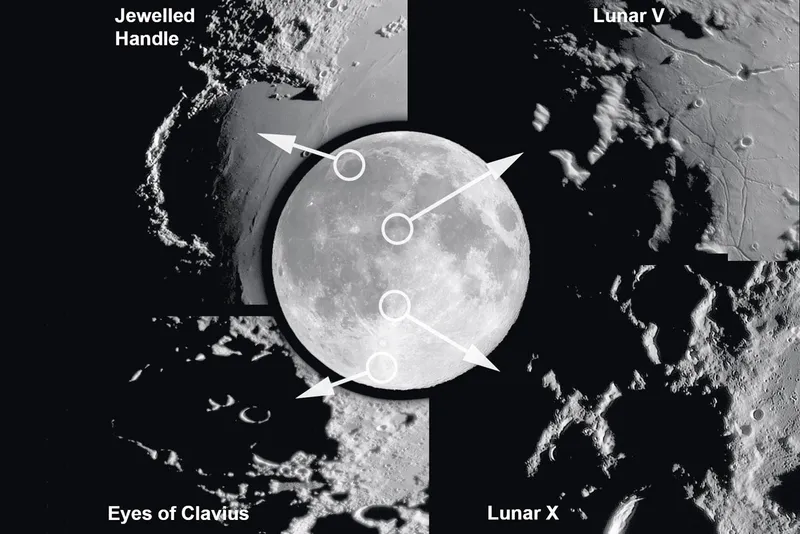The early lunar crescent phases that follow the new Moon are well positioned in the early spring evening sky. As we head from February into March, the spring crescents look very beautiful against the glow of evening twilight.
If you have binoculars or a small telescope, there are things to look out for. Known as a clair-obscur effect, or trick of the light, recognisable shapes appear among the Moon’s jumbled regions of light and shadow. Two popular examples are known as the Lunar X and V. These occur at the same time in different positions along the Moon’s terminator – the line dividing night from day.
Spot them on 17 February at around 00:40am and again on 17 March in a daylight sky at 2:20pm. The effects only last for a few hours.
Another impressive clair-obscur effect is the Jewelled Handle. This occurs a couple of days after the first quarter Moon when the peaks of the curved Montes Jura (Jura Mountains) are illuminated during the lunar dawn.

Their distinctive arc appears to extend into the lunar night. This can just be noticed with sharp eyes, but it’s best seen with optical aid. The Jewelled Handle is best viewed on 19 February, in daylight at 3:50pm.
If it’s clear on the evening of 13 March, the waxing crescent Moon appears near bright Jupiter – a lovely sight if you have clear skies and one you can see with just your eyes.
Speaking of eyes, if you have a small telescope, look at the southern portion of the Moon a few days later on 18 March. Just before 8pm, the elliptical appearance of the large crater Clavius is mostly dark and bathed in shadow.
Two exceptions are the elevated crater rims illuminated within it. These form another clair-obscur effect known as the Eyes of Clavius.
undefined
Read more: